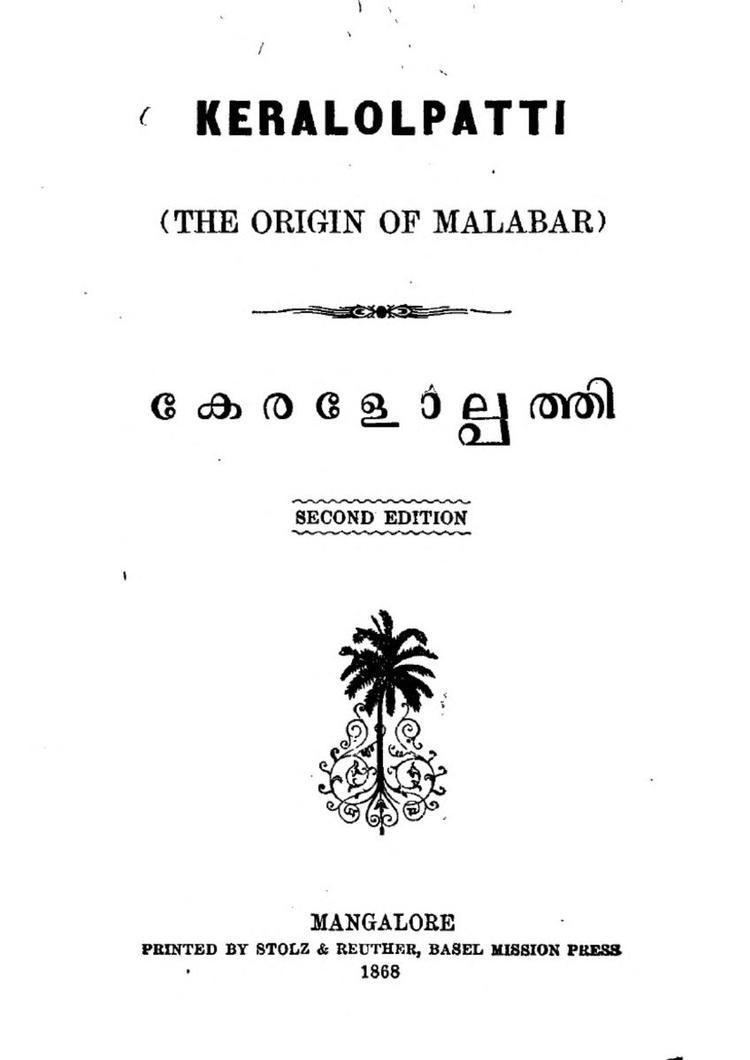 | ||
The Keralolpathi (Malayalam: കേരളോല്പത്തി kēraḷōlpatti; literally 'Kerala's Origin') is a Malayalam work that deals with the origin of the land of Kerala. Shungunny Menon ascribes the authorship of this work to Thunchaththu Ramanujan Ezhuthachan, a 17th-century scholar of the Malabar region of India. The Keralolpathi is mostly an expansion from an earlier Sanskrit work known as the Kerala Mahatmayam. That work is classed among the Hindu Puranas as an Upa Purana (or sub Purana) of the Bhoogola Purana.
Contents
The Keralolpathi covers the ancestry of the Namboodiri Brahmins and other castes of Kerala and is sometimes called the "Kerala Ulpathy". While the "Kerala Mahatmayam" deals with the origin of Kerala and its people alone, the Keralolpathi gives a history of Kerala down to the modern age, including reference to the British in Kerala.
Perumals mentioned in Keralolpathi
Perumals of Keralolpathi
Criticisms
Historians doubt the reliability of this collection of legends as it contains many discrepancies. For instance it states that a certain Viceroy of Kerala went to Mecca and met the Islamic prophet Mohammed there. However the corresponding date mentioned is such that the prophet was not even born till more than a century later. It also mentions that the King Krishnadevaraya of the Vijayanagara empire appointed a Viceroy over Kerala in 428 AD. However the said king reigned between 1509 and 1529 AD.
Likewise even the origins of most of the castes and clans of Kerala varies from the ancient Sanskrit Kerala Mahatmayam. Besides, by the 18th century modified versions of the work started appearing, varying from kingdom to kingdom and region to region in Kerala. Therefore, according to Shungunny Menon (a native historian of Travancore, Kerala) one cannot place, in the Keralolpathi, the value of a historical source. Shungunny Menon, stated that:
William Logan, who was the author of the Malabar Manual also refutes the validity of the Keralolpathi and describes it as:
K.P. Padmanabha Menon, another native historian calls the Keralolpathi:
